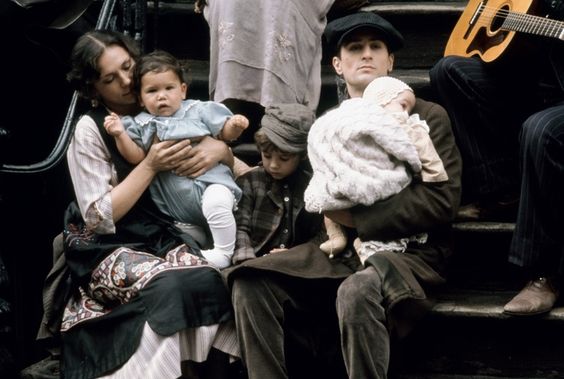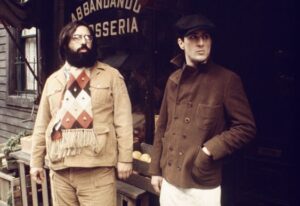
The Making of The Godfather Part II

With Paramount Plus’s excellent mini-series, The Offer, telling the story of the making of The Godfather earlier this year, we look at the making of the superior sequel, The Godfather Part II
They made him an offer he couldn’t refuse. Francis Ford Coppola had bugger-all interest in directing a sequel to The Godfather, but he couldn’t turn down the cheque in front of him. After all, $1,000,000 was a record-breaking deal for a director.
Taking the money would mean climbing back into bed with Paramount studios and Bob Evans, who’d helpfully fired him three times from the first film. At one point, Evan’s had a second director trailing him, who could pick up the pieces when Coppola inevitably fucked up.
The Godfather had put Francis Ford Coppola to the top of the heap, though, the dynamic leader of the new Hollywood elite, artist and commercial dynamo in one heavily bearded package.
It was certainly how he liked to see himself.
He could use that money to help make small personal films, building his production house, Zoetrope, into a studio he and his friends had dreamed of.
When he finally accepted the offer, even through the haze of his blossoming megalomania, he probably didn’t realise that he’d be making the best film of his career.
Paramount was going to make it anyway. They announced the sequel only a month after the first movie opened. Mario Puzo had been commissioned for $150,000 to write a script provisionally entitled DON MICHAEL, THE DEATH OF MICHAEL CORLEONE or THE SON OF DON CORLEONE.
Bob Evans stated that Coppola would be involved with the production.
This was news to Coppola. He was more interested in making THE CONVERSATION and other potential Zoetrope projects.
“When you’ve got a recipe to make Coca-Cola,” whinged Paramount Boss Charlie Bluhdorn, “You make Coca-Cola.”
Coppola suggested an interested Martin Scorsese, but Paramount were adamant about retaining the on-fire Coppola. “You were the star of The Godfather,” insisted Paramount executive Peter Bart. “Give me any terms.” Well, they asked.
Coppola had three demands; firstly, that he be allowed to make THE CONVERSATION; secondly, that he has complete creative control over the project (and that Bob Evans be allowed nowhere near it) thirdly, that the title be The Godfather Part II.
It was the third one that flummoxed Paramount. A numbered sequel was utterly unheard of, yet, Coppola insisted that the second movie be inextricably related to the first so that he could edit them together if necessary.
A nervous Bluhdorn rubber-stamped the deal. The budget would be $8 million.
Just as they did on THE GODFATHER, Coppola and Puzo would collaborate by working separately but trading notes. Coppola started modifying an earlier idea for another film about a ‘father and a son at the same age while adapting the Vito Corleone back story from Puzo’s original book.
A lot of the early onus fell on Puzo, as Coppola concentrated on THE CONVERSATION, though not before he devised a wish list of events.
Earlier ideas seemed less harsh on Michael; he isn’t cold enough to have his henchman kill Fred, plucking up the moral fortitude to do it himself. Other rejected ideas included a Sammy Davis Jr-Esque jester-cum-political go-between.
Ever the method man, De Niro screened the original movie over 50 times to nail the nuances of the younger Vito Corleone. He went to the same dentist as Brando to get the same bulldog mouthpiece (“but smaller”).
De Niro then packed his bags for Sicily for a few months to get a handle on the dialect.
Deep in pre-production, Al Pacino- who had approval on the rushed-out script – decided he didn’t like it and wouldn’t do it.
With the project standing with a gun to its head, a panicked Coppola flew his star to the Zoetrope office in San Francisco. He spent the weekend tightening up the script to Pacino’s satisfaction.
“It takes a leap of faith to make these kinds of movies,” said Coppola 25 years later. “Al sort of forced me to really tune it up. Years later I said to him, ‘Gee, Al, were you really now going to do the film?’ He said, ‘No, I was just trying to get you to rewrite the script and make it better.’”
Just as Michael Corleone gathered his family around him, the Coppola clan decamped en masse to the Kaiser estate, the set – and inspiration – for the Corleone compound in Lake Tahoe. As filming began in the freezing October – everyone had to wear thermals under their costumes – Francis’s wife and main support system, Eleanor, was becoming increasingly depressed with the bleakness of the surroundings.
